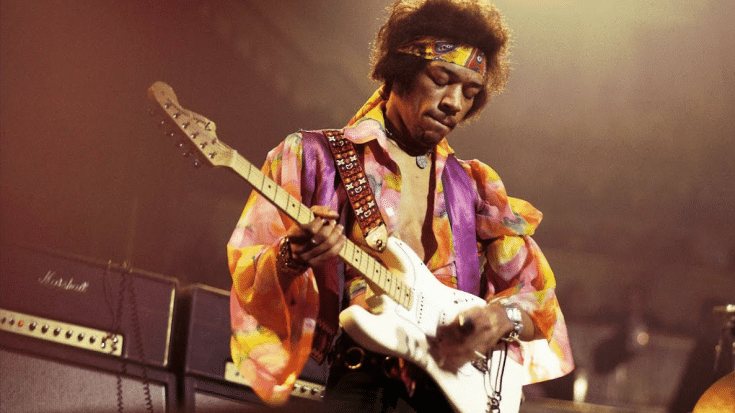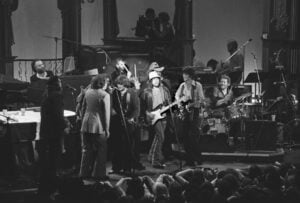10 Songs That Prove 1966 Was the Most Influential Year in Rock Music

via NostalgicRock / YouTube
The year 1966 was pivotal for rock music, marking a period of exceptional creativity and innovation that resonated with audiences worldwide. The artists of that era were breaking new ground, pushing boundaries, and writing the playbook for future generations of musicians. It was a time when legends were born, and the music crafted then still echoes loudly today. Here are ten tracks that stand out from 1966, showcasing why this year was monumental in the history of rock music.
The Beatles – “Eleanor Rigby”
Released in 1966, “Eleanor Rigby” by The Beatles stands as a powerful example of the innovative musical landscape of the time. Featured on the album “Revolver,” the song marked a significant departure from the band’s typical pop sound. “Eleanor Rigby” is characterized by its classical string arrangement and poignant lyrics about loneliness and despair. Paul McCartney’s striking narrative coupled with a double string quartet showcased The Beatles’ daring to redefine the boundaries of rock music. This track not only underlines the band’s artistic evolution but also highlights 1966 as a year of bold musical experiments and thematic complexity in rock music.
The Beatles – “Tomorrow Never Knows”
Closing the iconic “Revolver” album, “Tomorrow Never Knows” reflects The Beatles’ experimental phase. With its groundbreaking use of tape loops, reverse recordings, and John Lennon’s dreamlike vocals, the song is a sonic plunge into the unknown. It’s a standout track that helped redefine what rock music could be, encouraging other artists to explore beyond the typical three-minute pop format.
Bob Dylan – “Just Like a Woman”
Bob Dylan’s “Just Like a Woman” is a mesh of delicate beauty and raw honesty, a hallmark of his lyrical genius. This track displays Dylan’s ability to paint pictures with words and melodies, providing a window into complex emotions. The song’s storytelling and heartfelt delivery make it one of his most memorable tracks and a cornerstone in rock’s lyrical evolution.
The Rolling Stones – “Paint It Black”
With its driving sitar riff courtesy of Brian Jones, “Paint It Black” by The Rolling Stones is both haunting and mesmerizing. This song shows the band’s willingness to infuse rock music with non-Western influences, creating an irresistible fusion that reflected the diverse musical landscape of the time. It’s not just a rock song; it’s a cultural melting pot that embodies the daring nature of the era’s music.
The Kinks – “Sunny Afternoon”
The Kinks delivered a ray of musical sunshine with “Sunny Afternoon.” It’s a song that combines witty lyrics about the taxing troubles of wealth with a laid-back, infectious melody. The Kinks’ unique brand of rock, with Ray Davies’ distinctive vocal style, created soundtracks for the era’s social scene while securing their place as one of rock’s quintessential bands.
Simon & Garfunkel – “Scarborough Fair/Canticle”
In 1966, Simon & Garfunkel released “Scarborough Fair/Canticle,” a track that exemplifies the folk-rock duo’s intricate vocal harmonies and adept blending of traditional and contemporary elements. The song layers “Scarborough Fair,” a traditional English ballad, with “Canticle,” an anti-war song written by Paul Simon. This combination creates a hauntingly beautiful piece that critiques the Vietnam War while reflecting on the complexities of love and loss. The innovative dual song structure demonstrated the duo’s creative depth and ability to convey profound messages through music.
The Byrds – “Eight Miles High”
With “Eight Miles High,” The Byrds took rock music to new altitudes, melding jangly guitars with jazz-influenced riffs in an early example of psychedelic sound. The song’s hypnotic rhythm and abstract lyrics make it a pioneering piece that expanded the horizons of rock and signaled the shift toward psychedelia.
The Mamas & The Papas – “Monday, Monday”
“Monday, Monday,” released by The Mamas & The Papas in 1966, became a standout track, earning the distinction of being the group’s only number-one hit on the U.S. Billboard Hot 100. Recognized for its smooth melodies and complex harmonies, the song exemplifies the group’s distinctive blend of pop and folk elements. The lyrical content, exploring the mundane yet emotionally charged start of the week, alongside the captivating arrangement, captures the laid-back yet introspective feel of the 1960s counterculture. This track not only solidified their place in music history but also perfectly represented the sound and spirit of the mid-60s.
Cream – “I Feel Free”
Cream burst onto the scene with “I Feel Free,” showcasing the virtuosity of Eric Clapton, Jack Bruce, and Ginger Baker. As one of the earliest examples of power trios, they set the standard for rock bands to come. This song, with its driving beats and commanding vocals, captures the raw energy and talent that made Cream a phenomenon.
The Jimi Hendrix Experience – “Hey Joe”
The Jimi Hendrix Experience made an explosive debut with “Hey Joe,” igniting the rock world with Jimi’s fiery guitar style. This song isn’t just about remarkable musicianship; it’s a display of how a single track can redefine guitar playing forever. Hendrix’s emotive performance on this song paved the way for future guitar heroes and remains a high-water mark for guitar-driven rock.






















